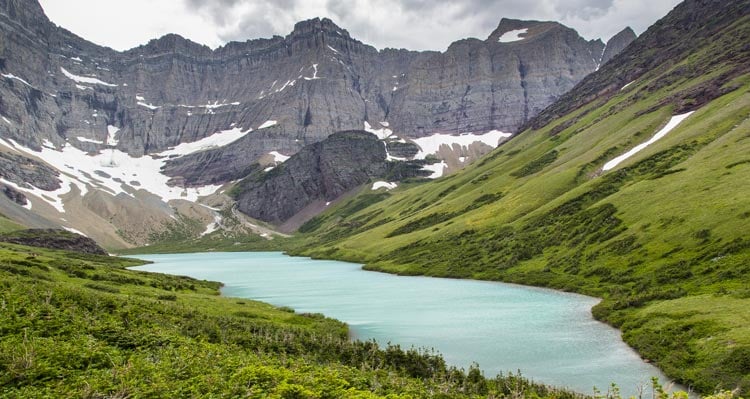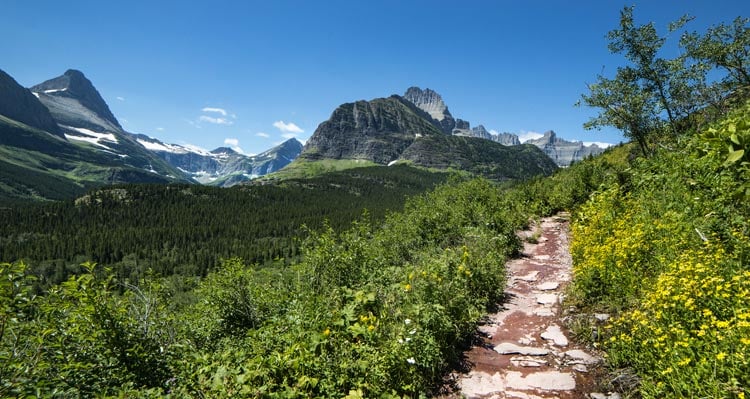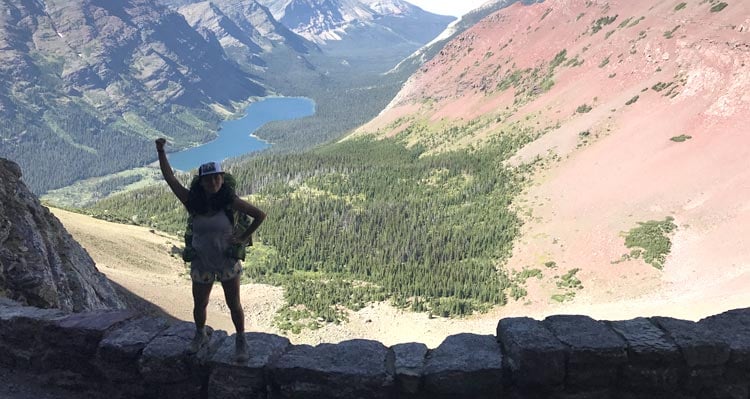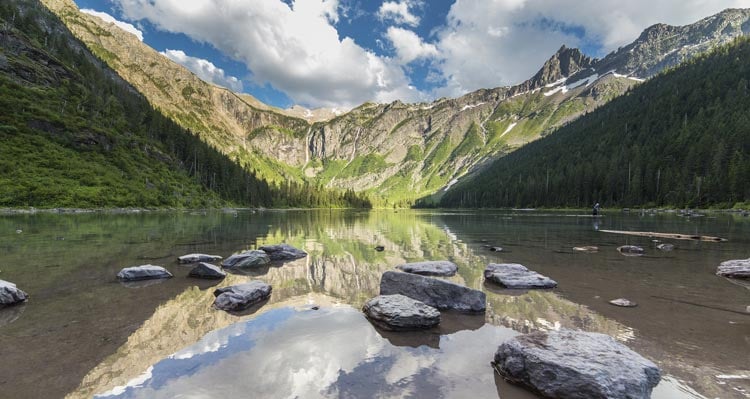Glacier National Park is a hiker’s paradise. Upwards of 700 miles of hiking trails lead through the park, from forest strolls to steep scrambles.
From the moment that trails become clear of snow, locals and visitors begin running for the mountains. Here are four of our favourite iconic Glacier hikes to put on your list this summer.

Hidden deep within the backcountry of the Many Glacier Valley lies a turquoise lake that sits in stillness. Bordered by Mt. Siyeh and Allen Mountain, Cracker Lake has an enchanting feel to it that is more than worthy of the 12-mile trek. From creek crossings to exploring old growth forests, the terrain of this hike is varied and exciting. As Cracker Lake is far removed from the busier places of Glacier National Park, be extra bear aware when making this excursion.
Distance: 12.6 miles (return)
Elevation Gain: 1,400 feet
Trailhead: The Cracker Lake Trailhead begins from eastern shore of Swiftcurrent Lake, 20 miles from St. Mary Village.

The Iceberg Lake hike is a Glacier classic, known for wildflowers along the trail and stubborn snow and ice around the lake that often doesn’t melt until September! The trail is best in late June or early July, at the peak of wildflower season and before the mid-summer crowds arrive. Iceberg Lake itself is ringed by peaks that tower 3,000 feet above, protecting the snowdrifts on the cliff walls from the sun.
Distance: 9.7 miles (return)
Elevation Gain: 1,275 feet
Trailhead: The Iceberg Lake Trailhead is located at the end of the Continental Divide Trail (Route 3) in Many Glacier, 21 miles from St. Mary Village.

Ptarmigan Trail is a gem of a hike that ends with an added bonus. The trail winds through pine forests and huckleberry patches, and then along the shores of Ptarmigan Lake, where Bighorn sheep and mountain goats can often be seen.
From the lake, the trail switchbacks steeply to the entrance of the Ptarmigan Tunnel. The 240-foot long tunnel, originally built for horseback tours of the park in the 1930s, leads through the heart of the mountain to an incredible viewpoint of the glacially-sculpted valley.
Distance: 10.7 miles (return)
Elevation Gain: 2,300 feet
Trailhead: The Ptarmigan Trailhead is the same as the Iceberg Lake Trailhead, located at the end of the Continental Divide Trail (Route 3) in Many Glacier.

One of Glacier National Park’s most popular hikes, Avalanche Lake is one to check of the bucket list early in the summer season. It’s a perfect season-starter hike with moderate elevation gain and trail length. In addition to the steep cliff walls surrounding the lake and basin that gave it the name Avalanche Lake, the lake also holds a claim to fame for being one of the first walking trails developed for tourist use in the late 1800s.
Distance: 4.5 miles (return)
Elevation Gain: 730 feet
Trailhead: The Avalanche Lake Trail begins from the Trail of the Cedars Trailhead, located 11 miles northeast of Motel Lake McDonald.
Early season access to hiking in Glacier National Park is dependent on weather, seasonal snow melt and wildlife activity. Always plan ahead, be prepared for wildlife encounters and check in with the National Parks Service for current conditions before hitting the trails.